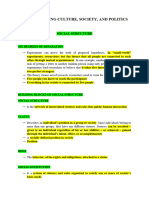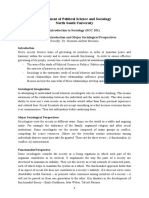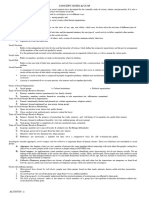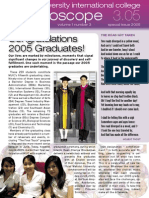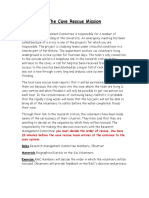0% found this document useful (0 votes)
18 views6 pagesModule 2 Lesson 2 Society
Culture is like the soul of a society, shaping how people think, act, and interact with one another. It's the fabric of traditions, beliefs, values, and customs woven together over generations. Imagine it as the invisible hand guiding our daily lives, from the language we speak to the rituals we follow.
At its core, culture is about shared identity and belonging. It's what makes a Filipino feel connected to another Filipino, despite differences in upbringing or location. Culture is the reason w
Uploaded by
pimppomp008Copyright
© © All Rights Reserved
We take content rights seriously. If you suspect this is your content, claim it here.
Available Formats
Download as PDF, TXT or read online on Scribd
0% found this document useful (0 votes)
18 views6 pagesModule 2 Lesson 2 Society
Culture is like the soul of a society, shaping how people think, act, and interact with one another. It's the fabric of traditions, beliefs, values, and customs woven together over generations. Imagine it as the invisible hand guiding our daily lives, from the language we speak to the rituals we follow.
At its core, culture is about shared identity and belonging. It's what makes a Filipino feel connected to another Filipino, despite differences in upbringing or location. Culture is the reason w
Uploaded by
pimppomp008Copyright
© © All Rights Reserved
We take content rights seriously. If you suspect this is your content, claim it here.
Available Formats
Download as PDF, TXT or read online on Scribd
/ 6




























